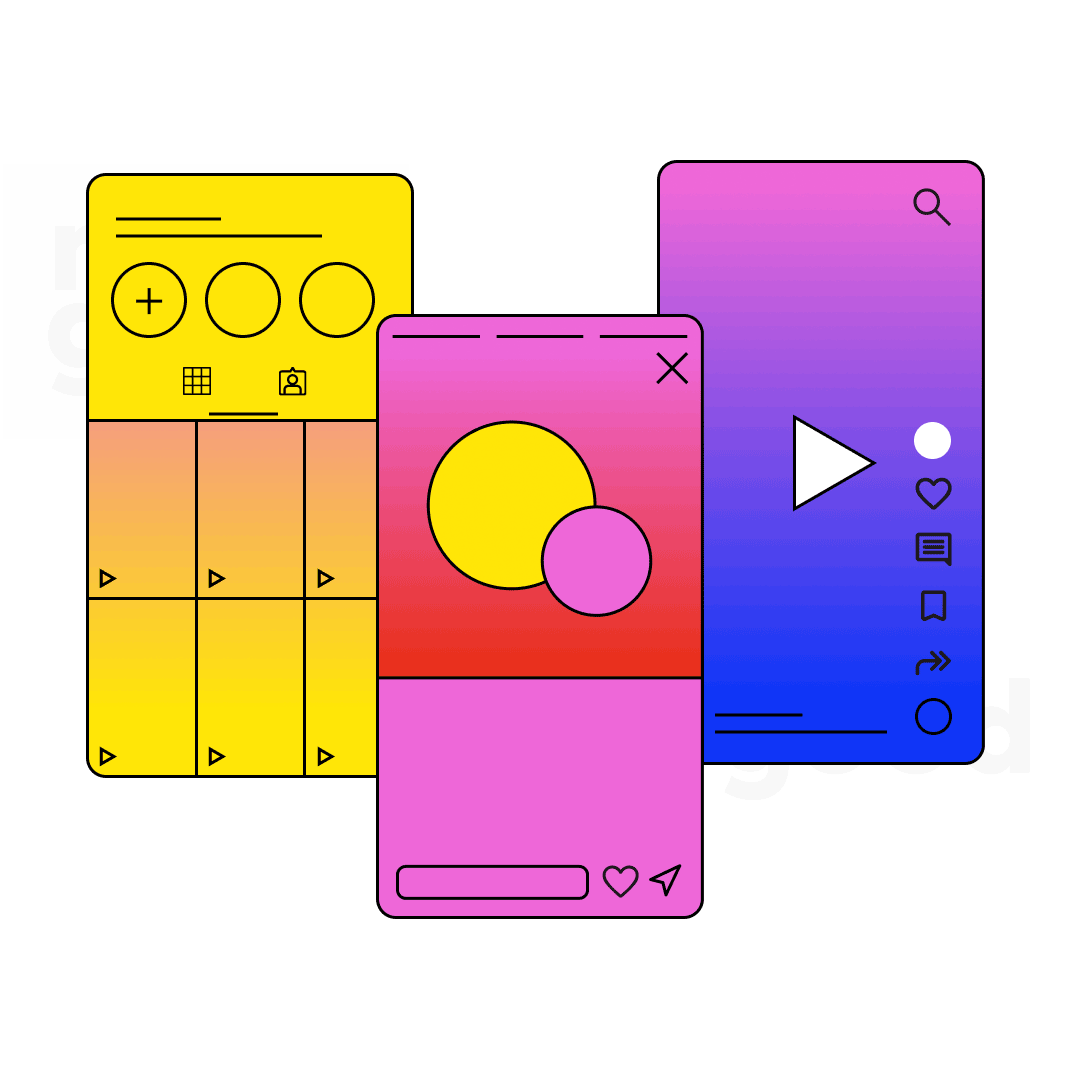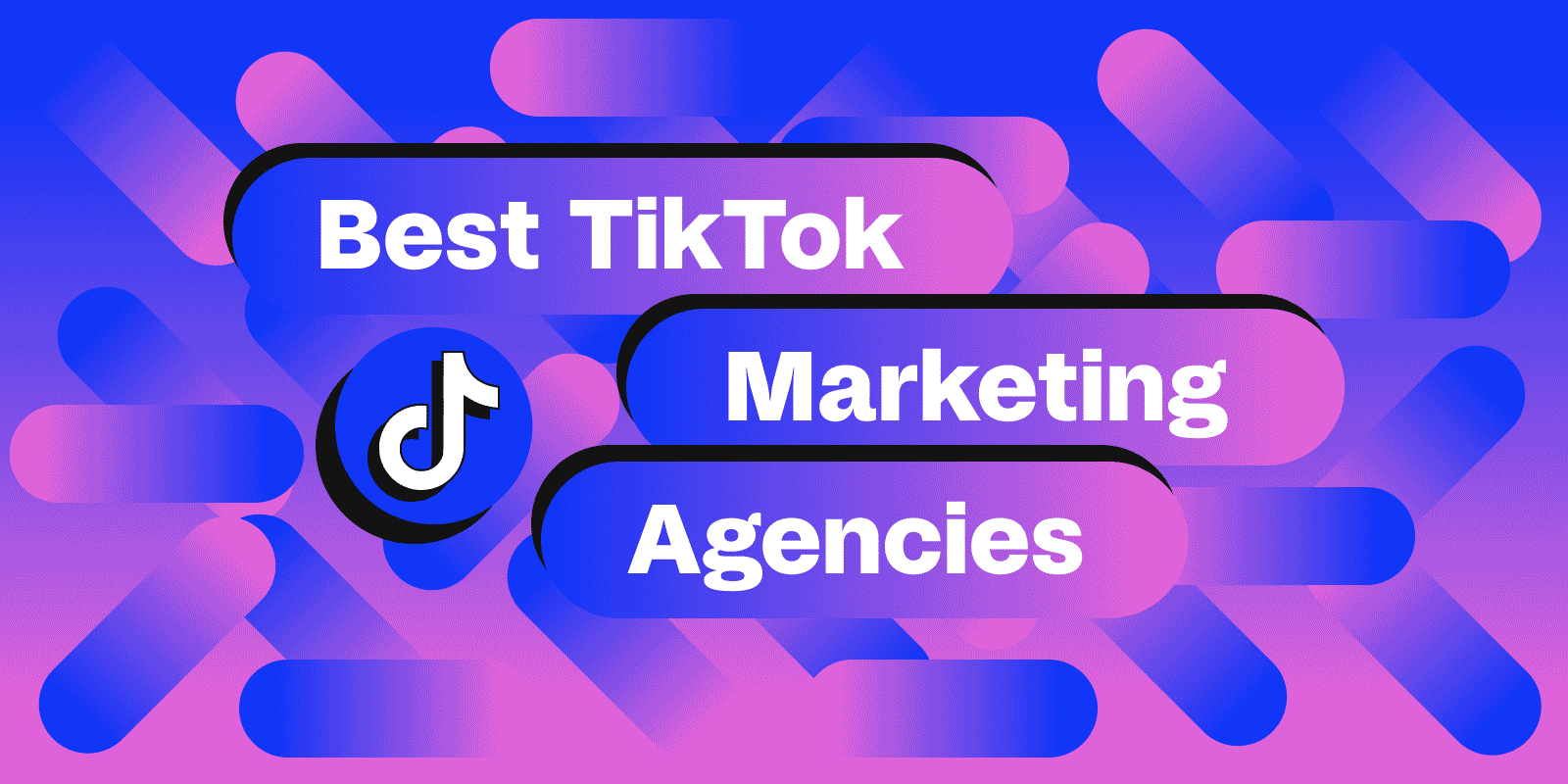Short form what?

Outside of AI, “=short-form video content” is everyone’s new favorite buzzword. You’ve seen short-form content everywhere — you’ve just never identified it as such. According to statistics, it’s one of the best ways to get your audience to engage with your content until the end and encourage virality — and according to psychology, it’s not going away anytime soon.
So how long should your short-form videos be, what should they contain, and where should you post them? Let’s get into it.
Platform of choice

The big three social media platforms consist of TikTok, Instagram Reels, and Youtube Shorts. Though Instagram and YouTube have been around much longer, TikTok became widely recognized as one of the first major short-form video apps. As of July 2023, its user base quickly grew to well over 1 billion (yes, with a “B”) – a long way from its origin 7 years ago.
And when other platforms took note of its widespread popularity, they formulated their own copycat versions of TikTok to supplement their apps – with Instagram releasing Reels in August of 2020 and YouTube introducing Shorts that same year in September. Whichever platform you choose, we recommend sticking with any (or all) of these as the primary location for your short-form video content.
Timing is everything

There’s no exact magic number, but most folks can agree that the average video length for short-form video format conventionally ranges anywhere from 15 seconds to 3 minutes. Sounds oddly specific, right? It’s because 15 seconds to 3 minutes is the conventional length of a TikTok video (which, as we know, was the first majorly recognized short-form video app).
And there’s a massive reason why it’s become so popular over the last few years — human attention spans have significantly decreased, and technology is partly to blame. According to a study done by Gloria Mark, Ph.D., the average attention span ran about 2 1/2 minutes, dwindling to 75 seconds in 2012, currently rounding out to 47 seconds at present. So keep in mind that while platforms like TikTok, Instagram Reels, and YouTube Shorts allow for video length to run 60 seconds (or longer), it doesn’t always make it advisable to use the full time allotted.
Tortoise vs. Hare

We know – long-form videos are a staple content format because they gained popularity first. So what’s the difference between long-form content and short-form content?
- Orientation. Think about it – have you seen a long-form video in vertical format (excluding TIkTok’s recent 10-minute time limit)? Probably not, and for good reason. Short-form videos are often vertical because a short-form video platform (like TikTok and Instagram) is meant to be viewed on a phone, and long-form videos were popularized on desktop computers (such as YouTube). And in all honesty, it’s such a widely recognized (unofficial) rule that when short-form videos are horizontal or long-form videos are vertical, it’s almost frowned upon. So when crafting what types of content you want to create, think about what platforms you want to upload to – it will help guide the orientation of your videos to optimize their performance.
- Detail. Simply put more time = more information. With long-form content, you can add as much detail as your heart desires. Short form? Not so much. You have seconds to get your point across – so you’re left with a few social media strategies if your brand has some dense information to convey to an audience. You can choose the path of least resistance and opt for long-form videos, compartmentalize your thoughts into one short-form video, or create a series of short-form videos addressing each individual point.
There’s no wrong way to choose, it simply depends on the form of content that fits best with your brand and its content marketing strategy.
Tips and tricks

As marketers, we’re expected to tell an interesting and compelling story that also ties back to the brand and calls the audience to action at the end. As if that wasn’t difficult enough on its own, we now have to do it in – you guessed it – 15 seconds to 3 minutes! So here are a few ingredients to sprinkle into your secret sauce as you navigate fitting the time limit while also appealing to your viewership.
- Story first, sell second. Ever heard of “shoppertainment”? It’s a mashup of “shopping” and “entertainment” – and it means exactly what you think it does. Because it’s becoming more and more difficult to retain audience attention, it’s imperative to inject storytelling elements into your content. The best ads feel like, well, not ads. If it can pass as regular content that circles back to your brand and its value or mixes in educational content in the end, it’ll perform much better than the traditional formats that populated social media years ago.
- Keep it simple. It’s easy to get lost in ideation and want to go overboard with production – we’re here to confirm that extravagance isn’t always necessary. Your audience is looking for quality content in a neatly wrapped 60-second video – so give them what they want in a simple format that’s easy to follow across all social media channels.
- Kill your darlings. You might have really liked that super aesthetically pleasing shot or that witty joke in the script, but it’s adding little value to your video – and more time onto your content. Your audience is ready to scroll away at any given moment, so don’t give them a reason to feel bored or confused by your lengthy videos! Cut everything and anything that could read as a filler (no matter how much it hurts – trust us, we’ve been there).
Struggling to find inspiration? Shorter videos lend themselves to a bevy of ideas to reach a broader audience and build stronger brand loyalty. Here are a few ways to get those vertical videos working in your favor:
- Short-form video trends. If you truly are stuck for inspo, following current trends is by far the easiest fix, because they basically come with their own instructions. That’s right – trends are often intuitive, and the best part is that they fall on the shorter end of short-form videos. Be they CapCut templates, earworm song snippets, or viral audio bites, trends can really work when used correctly for your brand. Want to know how to identify key trends as they occur to utilize in your video marketing strategy? Find a sound or video format that keeps popping up on your page, and continually check to see how quickly videos populate under the sound. If it’s fast-growing, you have yourself a trend on the rise – and should get involved before the space becomes too oversaturated!
- Influencer marketing. Looking to reach wider audiences than you have a present? You’ll find influencer marketing to be a powerful tool. The benefit of partnering with influencers (on any platform) is presenting your name alongside theirs, which introduces your brand and product or service to their viewership. Once those users see a voice they know, love, and trust showing support for your brand, they’ll likely be more open to learning more about you and becoming potential customers. Just take care to choose influencers that align with your brand – it wouldn’t make much sense for an influencer that promotes vegan products to work with a barbeque chain or for a sober influencer to promote the latest wine. Choose them wisely, and they’ll bring like-minded folks right to your door.
- User-generated content. A standout demonstration of a great product is user-generated content, where your customers create content on their own to promote your brand and product or service (and drive social proof). While some will create original content, sometimes it’s necessary to inspire your audience to pick up their phones and hit record. You can encourage user-generated content by holding competitions or challenges, creating filters or unique hashtags for their use, and more – and their content can range anywhere from product reviews to funny videos, giving you a wide range of (free) advertising.
- Product teasers. Want to get viewers excited about your brand? Hint at new releases as part of your content strategy. Almost like a newsletter, posting sneak peeks on social media makes your audience feel a part of something exclusive for their eyes only. And because it’s part of short-form video marketing, your teasers can retain their mystery due to their length. It’s a great way to generate buzz around what your brand is doing next and to spark interest in potential customers.
- Behind the scenes. Sometimes, your FAQ page just won’t cut it. Because text can only be so interesting (and in all honesty, often gets glossed over). You can help answer your customers’ questions with educational videos demonstrating product use, repair, inspiration, etc. Informative content conveyed in bite-sized pieces helps not only keep the audience in the know but engaged. So get creative with those BTS explainer videos!
Short form for the long run

Love it or hate it, the short form isn’t going anywhere for a while due to factors like the audience’s attention span (or lack of it) and the nature of the big three social media platforms (TikTok, Instagram Reels, and YouTube Shorts) lending themselves to short-form media. With all these tips and tricks in your arsenal, your brand can optimize its presence on these platforms to meaningfully engage with your viewership.
Remember – you have no more than 3 minutes to get your point across, so choose your content wisely!






